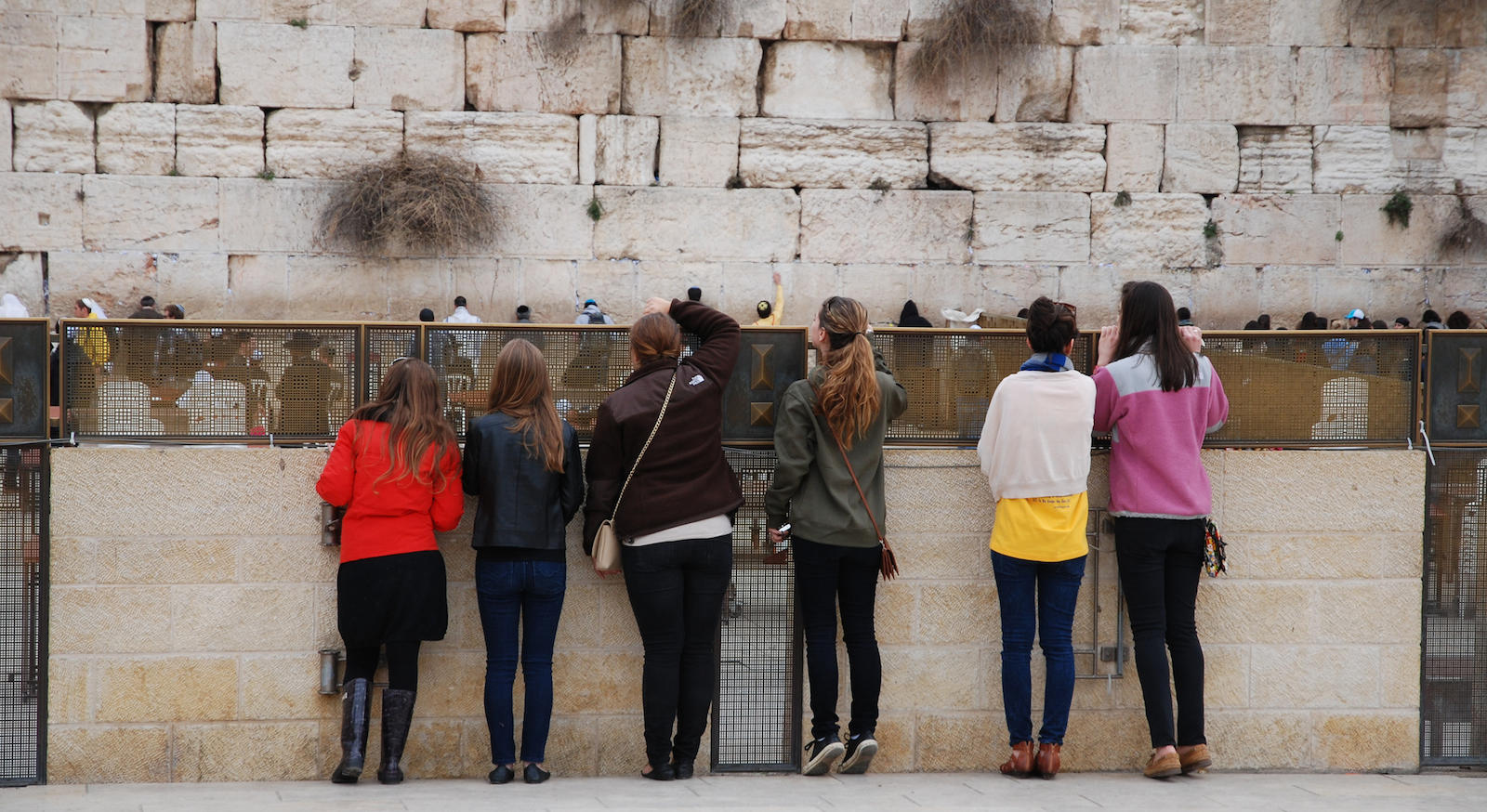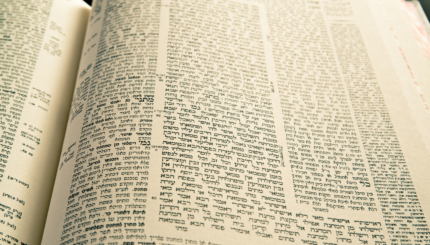Jewish feminists agree that Jewish prayer and practice have slighted women, and many of them are seeking change. They disagree, however, about the benefit of changes intended to include women’s perspectives in the Jewish worship experience.
Including Women, Transforming Prayer
This story was told by Rabbi Laura Geller:
One day when I sat in a class in my rabbinical seminary…we studied the tradition of berakhot–blessings, blessings of enjoyment, blessings relating to the performance of mitzvot (commandments) and blessings of praise and thanksgiving. My teacher explained…’There is no important moment in the lifetime of a Jew for which there is no blessing.’ Suddenly I realized that it was not true. There had been important moments in my life for which there was no blessing. One such moment was when I…first got my period.
Geller’s story depicts a paradoxical situation. She appears to be a full participant in an egalitarian Judaism. She is even a rabbinical student. But her internal experience is of exclusion: vital components of her personhood have been ignored. What is more, her invisibility is invisible. Her teacher and her male classmates do not know that they do not see her.
With your help, My Jewish Learning can provide endless opportunities for learning, connection and discovery.
What would have to happen for liturgies to become fully inclusive of women as well as men? First of all, we would have to acknowledge women as well as men as members of the praying community. Classical Judaism, along with counting only men in the community of worshippers, based its liturgies exclusively on stories about male ancestors and described the people Israel as if all of them were male. Women’s inclusion would necessitate supplying the missing ancestral memories, the missing language about the people Israel, and the missing human experiences about which prayer speaks.
Second, we would have to involve women along with men in the creation and transformation of the prayers and in the compilation of the liturgies that all of us will recite together.
Third, in order to begin to create truly inclusive worship, we would have to acknowledge the extent to which our current services reflect masculine sensibilities, styles, and gestures and androcentric language and theologies. We would have to admit that the exclusively masculine language with which we currently refer to God is a metaphoric language that has been totalized. That is, selected metaphors have been taken to represent the totality of the God toward whom they point. Such an understanding is, at the least, inadequate and distortive.
To correct this situation, would have to enrich and diversify the language in our present prayer books with feminine forms and imagery. But substituting words is not enough. We would have to make room for new genres, new gestures, new styles of prayer. This third task is complicated by so many considerations–theological, anthropological, psychological, and aesthetic–that it is really incommensurate with the other two.
–Rachel Adler, a feminist theologian, earned a Ph.D. in Religion and Social Ethics from the University of Southern California conjointly with Hebrew Union College, Los Angeles, where she now teaches. Excerpted with permission from Engendering Judaism: An Inclusive Theology and Ethics. © Rachel Adler, 1998, Jewish Publication Society.
Masculine-Biased Language
Until now, the prayer book has expressed the spiritual yearnings of half the Jewish people, the men who were the writers, editors, and translators of a liturgy that was designed for use by men. Still, many of the prayers reflect human experience such as prayers for health, wisdom, forgiveness, and justice as well as praise and thanksgiving. Feminine imagery appears, for example, in the Hallel [Psalms 113-118], which speaks of barren women becoming mothers. It is difficult to determine whether the prayer reflects female yearnings or male priorities–the desire for progeny–which women internalize.
No matter how sensitive, these prayers, written from a male perspective, assume that women’s only priority is to fulfill her biological function–to bear children. These prayers are highly selective, reflecting a biblical perspective (male) that features the Matriarchs as revered female role models. The editors of our prayer books traditionally excluded prayers by other biblical women, such as Miriam and Deborah, which offer alternative role models.
Through the centuries, male editors of the prayer book stereotyped the role of women in the eyes of those at worship. The language of liturgy is also unrelievedly masculine, creating the overriding impression that worship is a male prerogative. Since services were traditionally conducted in Hebrew, which has no neuter gender, it was only natural that prayers, written and selected by men, would appear only in masculine form, further excluding women-whether or not intentionally. Translations in the vernacular such as English, which does have a neuter gender, were nevertheless couched in solely masculine terms, compounding the problem.
As Jews, who have suffered for centuries because of the stereotyped images that were used to exclude us from the mainstream of society, we are particularly sensitive to the way language is used to foster and perpetuate prejudice. Yet, when the question of masculine-biased language in liturgy is raised, the subject is often trivialized, the hostility hidden under the guise of humor. Women, themselves, sometimes object to suggested changes. They may be going through a process of denial, for the price of recognition may be too painful, or they may simply be unaware that change in language and liturgy is in good Jewish tradition.
In biblical days, even the names of revered Patriarchs and Matriarchs were changed when a radical change in character took place. Abram became Abraham when he received God’s blessing (Genesis 17:5). Sarai became Sarah as she became the mother of the Jewish people (Genesis 17:15). Jacob’s name was changed to Israel as a result of his transformation of character (Genesis 32:29). Religious equality for women signifies a similar change in status, necessitating inclusion in the language of liturgy and, thus, the elimination of sexist language.
The problem of masculine-biased language has been addressed on two levels. It has been relatively easy to reach a consensus on the need to change language referring to humanity. Resistance to the elimination of masculine imagery about God is much more pervasive, indicating the profound emotional impact of the language of prayer.
–Annette Daum was Director of the Department of Inter-religious Affairs of the Union of American Hebrew Congregations and Associate Director of the Commission on Social Action of Reform Judaism. Reprinted with permission from Daughters of the King: Women and the Synagogue, edited by Susan Grossman and Rivka Haut. © Annette Daum, 1992, Jewish Publication Society.
Feminine Language for God
Some feminists view the traditional Hebrew liturgy–and English translations such as Rabbi [Jules] Harlow’s [in the book from which this article is taken]–as sexist. For them, the image of God as a male king, who sits on a throne and judges humanity, is alienating. Some of these feminists feel that adding feminine language–God as queen, God as mother–makes the concept of the divine inclusive, and this allows them to embrace Jewish prayer.
Other feminists, myself included, object to changing the Hebrew language that refers to God. The traditional Hebrew of the siddur [prayerbook] unites Jews everywhere. Although I, and other Jewish feminists, welcome changes in the English translations and though I welcome original prayers and new feminist rituals (alongside new understandings of Jewish women’s roles), I believe that public, communal Hebrew prayer should remain largely fixed.
As Rabbi Harlow argues, traditional Hebrew prayer, even today, is shared by Jews in all countries of the world. I pray with greatest intensity when the words are familiar and link me to earlier generations and to Jews in Israel and elsewhere.
I believe, too, that traditional conceptions of God include attributes that are neither masculine nor feminine; both women and men are wise, strong, merciful. For me, God transcends gender. I am uncomfortable with feminist rewriting of Hebrew language that addresses or refers to God. While changing references to the Jewish people, both to our ancestors and to Jews today, is–for me–a necessary change, changing the way we refer to God is, in my mind, not authentically Jewish. The Bible describes God using physical terms with masculine gender: Melekh or King, Adon or Lord. Yet, as Rabbi Harlow points out, the Bible also uses feminine imagery in referring to God.
None of these descriptions or images of God in the Bible imply God is either masculine or feminine. Some people would assign specific attributes to masculine or feminine aspects of God, but such narrow definitions tend to create and reinforce stereotypes that are misleading because of God’s unique and genderless nature. Tampering with the original Hebrew eliminates the nuances of the multi-dimensional meaning of God.
siddur
Pronounced: SIDD-ur or seeDORE, Origin: Hebrew, prayerbook.



